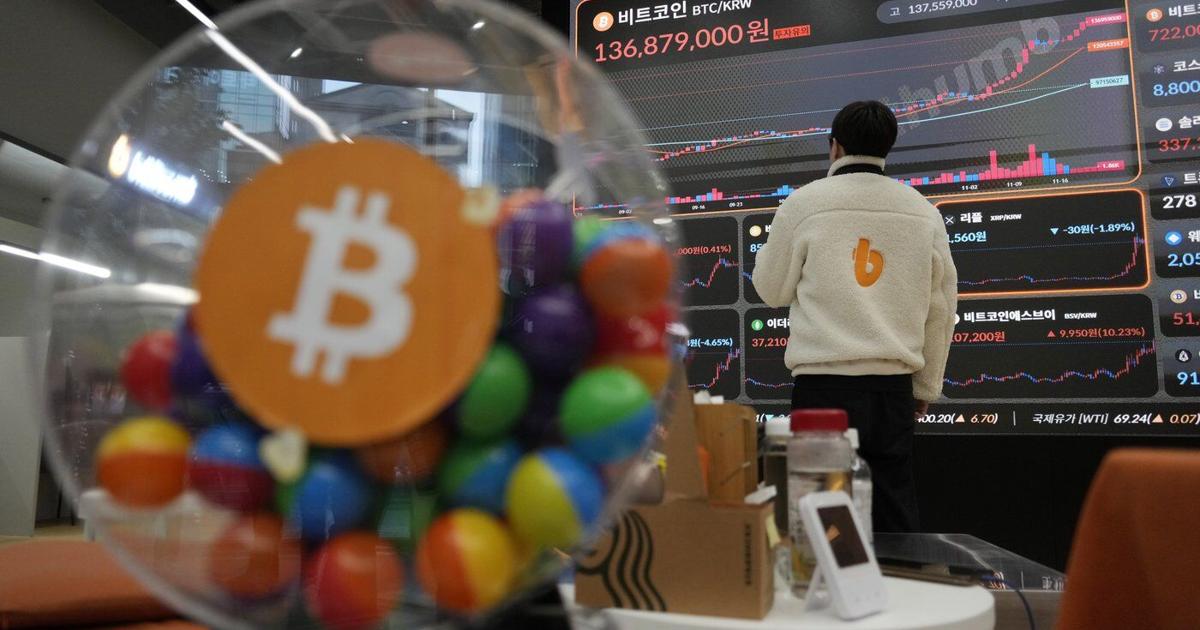“Barbenheimer” was a phenomenon impossible to manufacture. But, more than a year later, that hasn’t stopped people from trying to make “Glicked” — or even “Babyratu” — happen.
The counterprogramming of “Barbie” and “Oppenheimer” in July 2023 hit a nerve culturally and had the receipts to back it up. Unlike so many things that begin as memes, it transcended its online beginnings. Instead of an either-or, the two movies ultimately complemented and boosted one another at the box office.
And ever since, moviegoers, marketers and meme makers have been trying to recreate that moment, searching the movie release schedule for odd mashups and sending candidates off into the social media void. Most attempts have fizzled (sorry, “Saw Patrol” ).
This weekend is perhaps the closest approximation yet as the Broadway musical adaptation “Wicked” opens Friday against the chest-thumping sword-and-sandals epic “Gladiator II.” Two big studio releases (Universal and Paramount), with one-name titles, opposite tones and aesthetics and big blockbuster energy — it was already halfway there before the name game began: “Wickiator,” “Wadiator,” “Gladwick” and even the eyebrow raising “Gladicked” have all been suggested.
“’Glicked’ rolls off the tongue a little bit more,” actor Fred Hechinger said at the New York screening of “Gladiator II” this week. “I think we should all band around ‘Glicked.’ It gets too confusing if you have four or five different names for it.”
As with “Barbenheimer,” as reductive as it might seem, “Glicked” also has the male/female divide that make the fan art extra silly. One is pink and bright and awash in sparkles, tulle, Broadway bangers and brand tie-ins; The other is all sweat and sand, blood and bulging muscles.
Both films topped Fandango’s most anticipated holiday movie survey, where 65% of respondents said that they were interested in the “Glicked” double feature. Theaters big and small are also pulling out the stops with movie-themed tie-ins. B&B Theaters will have Roman guards tearing tickets at some locations and Maximus popcorn tubs. Marcus Theaters is doing Oz photo ops and friendship bracelet-making. Alamo Drafthouse is leaning into the singalong aspect (beware, though, not all theaters are embracing this) and the punny drinks like “Defying Gravi-Tea.”
“Rather than it being in competition, I think they’re in conversation,” “Gladiator II” star Paul Mescal said. “This industry needs a shot in the arm. Those films gave it last year. We hope to do it this year.”
And the hope is that audiences will flock to theaters to be part of this moment as well. It’s a sorely needed influx of could-be blockbusters into a marketplace that’s still at an 11% deficit from last year and down 27.2% from 2019, according to data from Comscore.
“Competition is good for the marketplace. It’s good for consumers,” said Michael O’Leary, the president and CEO of the National Association of Theatre Owners. “Having two great movies coming out at the same time is simply a multiplier effect.”
“Glicked” is currently tracking for a combined North American debut in the $165 million range, with “Wicked” forecast to earn around $100 million (up from the $80 million estimates a few weeks ago) and “Gladiator II” pegged for the $65 million range.
“Barbenheimer” shattered its projections last July. Going into that weekend, “Barbie” had been pegged for $90 million and “Oppenheimer” around $40 million. Ultimately, they brought in a combined $244 million in that first outing, and nearly $2.4 billion by the end of their runs.
It’s possible “Glicked” will exceed expectations, too. And it has the advantage of another behemoth coming close behind: “Moana 2,” which opens just five days later on the Wednesday before the Thanksgiving holiday. “Glickedana” triple feature anyone?
“These are 10 important days,” O’Leary said. “It’s going to show the moviegoing audience that there’s a lot of compelling stuff out there for them to see.”
There are infinite caveats to the imperfect comparison to “Barbenheimer,” as well. “Wicked” is a “Part One.” Musicals carry their own baggage with moviegoers, even those based on wildly successful productions (ahem, “Cats”). “Gladiator II” got a head start and opened internationally last weekend. In fact, in the U.K. it played alongside “Paddington in Peru,” where that double was pegged “Gladdington.” “Gladiator” reviews, while positive, are a little more divided than the others. And neither directors Ridley Scott nor Jon M. Chu has the built-in box office cache that Christopher Nolan’s name alone carries at the moment.
The new films also cost more than “Barbie” ($145 million) and “Oppenheimer” ($100 million). According to reports, “Gladiator II” had a $250 million price tag; “Wicked” reportedly cost $150 million to produce (and that does not include the cost of the second film, due next year).
The narrative, though, has shifted away from “who will win the weekend.” Earlier this year, Chu told The Associated Press that he loves that this is a moment where “we can root for all movies all the time.”
Close behind are a bevy of Christmas releases with double feature potential, but those feel a little more niche. There’s the remake of “Nosferatu,” the Nicole Kidman kink pic “Babygirl” and the Bob Dylan biopic “A Complete Unknown.” The internet can’t even seem to decide on its angle for that batch of contenders, and none exactly screams blockbuster. Sometimes the joy is just in the game, however. Some are sticking with the one-name mashup (“Babyratu”); others are suggesting that the fact that two of the movies feature real-life exes (Timothée Chalamet and Lily-Rose Depp) is enough reason for a double feature. And getting people talking is half the battle.
When in doubt, or lacking a catchy name, there’s always the default: “This is my Barbenheimer.”
___
Associated Press journalist John Carucci and Film Writer Jake Coyle contributed reporting.























